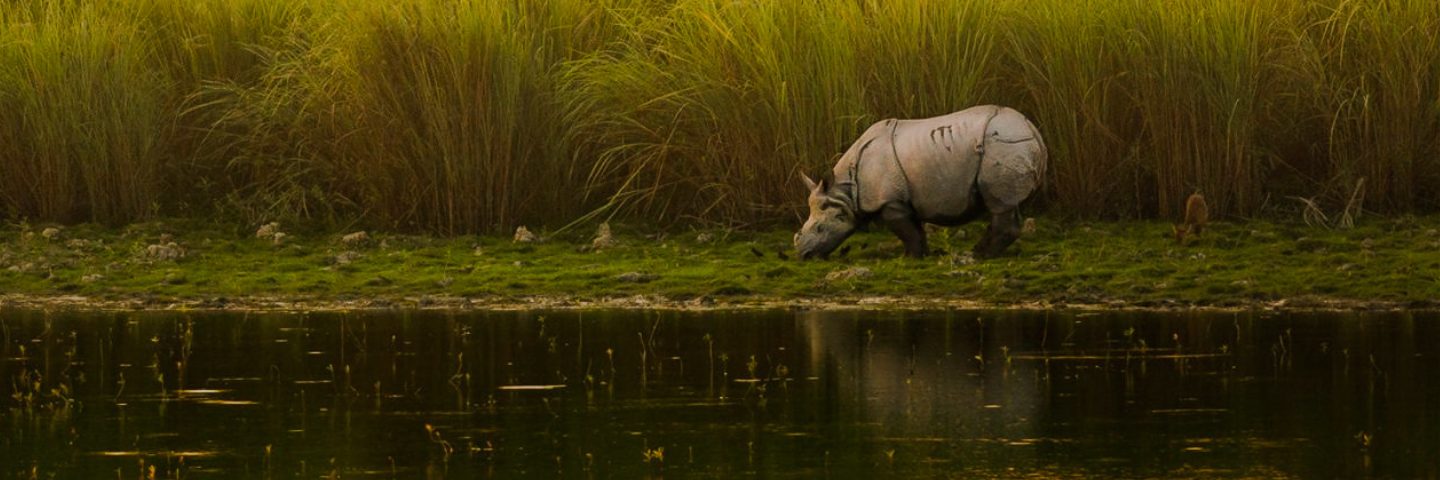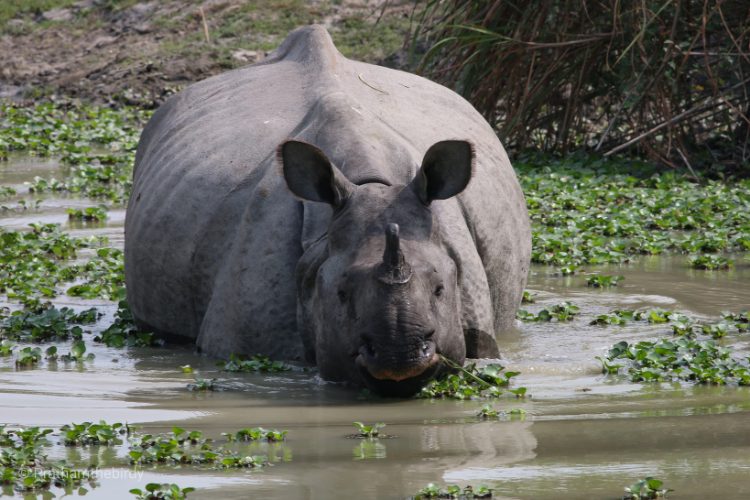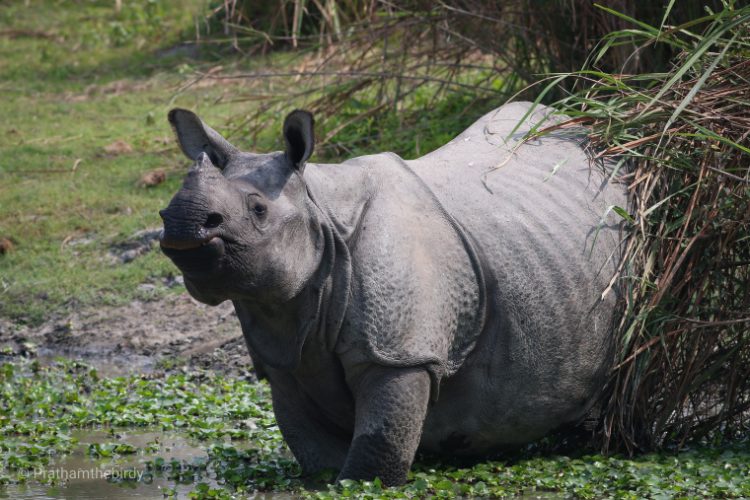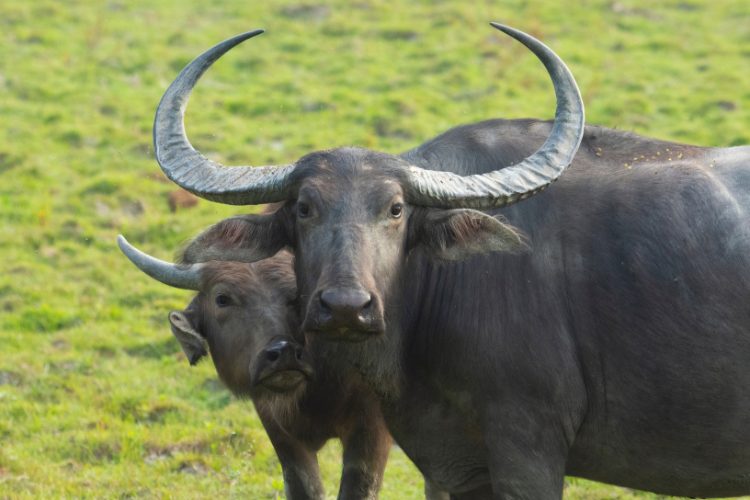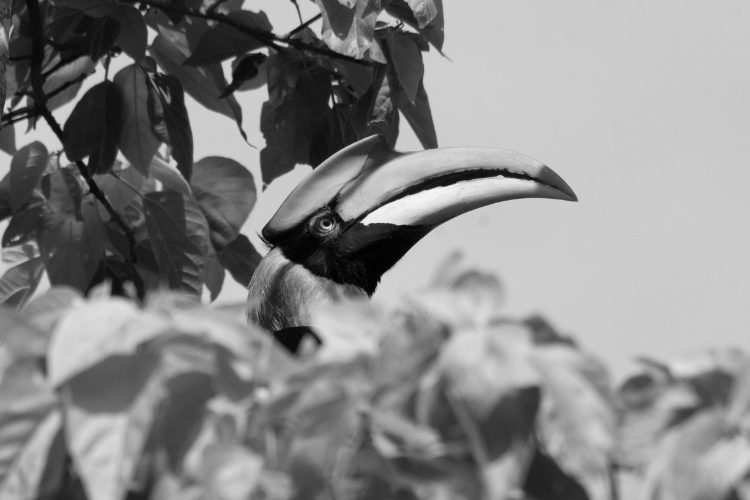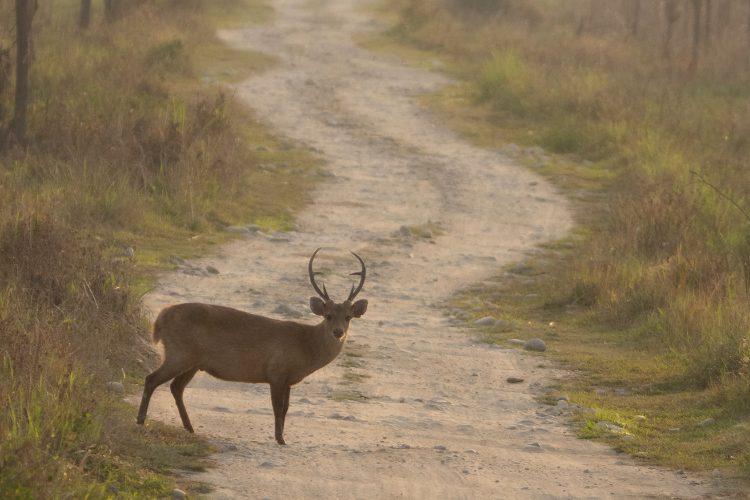Located in the district of Assam, India and endowed plentiful by the river Brahmaputra, the Kaziranga National Park is a 430 sq. km wide spectacle to behold.
Most of the diversity of this land is unique to this region, thus the park boasts tremendous tourism. It is home to two thirds of the entire earth’s population of one horned rhinoceros – a species that was once considered endangered, now thriving and blooming under the care of the dedicated staff and workers. A haven of rhinoceroses that you’ve only seen in Jurassic park, birds that you’ve only seen in videos, and elephants that you’ve only seen in documentaries! Travel to Kaziranga to encounter the force of nature amidst huge exciting animals, nature, safaris, river banks and much more.
Good To Know
Country
India
Country
State
India
Assam
Country
Nearest Airport
India
Guwahati
Country
Wildlife Sighting Index
India
3/10 for Tiger sighting
Country
Beauty of Forest Index
India
9/10 for Beauty of Forest
Country
Standard of Infrastructure Index
India
7/10 Stay and Amenities
Country
Bookings Open
India
60 Days in Advance
Country
Consider Securing
India
30 Days in Advance
Flora of Kaziranga National Park
The vast expanse of tall elephant grass, marshland, dense tropical moist broadleaf forests makes the park look beautiful and the Brahmaputra river only accentuates its beauty tenfold. Feast your eyes, as the difference in altitude of the east and west side of the park allow for visitors to enjoy four different types of vegetation; namely alluvial inundated grasslands, alluvial savanna woodlands, tropical moist mixed deciduous forests, and tropical semi-evergreen forests.
You can explore the different sceneries and nature dotted across the vast forest fields and never get tired. What’s more exciting is that the abundance of water bodies in the park gives way to a myriad of different water flora, decorating the lakes, ponds and rivershores. The perfect water scenery to wash away all the eyesores.
- Kumbhi
- Indian gooseberry
- Cotton tree
- Elephant apple
- Sugarcane
- Speargrass
- Common reed
- Forbs
- Syzygium
- Albizia procera
- Leea indica
- Aphanamixis
- Duabanga grandiflora
- Invasive water hyacinth
- Mimosa invisa
Fauna of Kaziranga National Park
Along with the iconic Greater one-horned rhinoceros, the park is the breeding ground of elephants, wild water buffalo, and swamp deer. As above-mentioned, over the years spotting tigers has also become a popular activity at the park. Moreover, the park is recognized as an important bird area by BirdLife International for the conservation of avifaunal species. Birds like lesser white-fronted goose, ferruginous duck, Baer’s pochard duck, storks and more specially migrate from Central Asia during the winter season.
The unique and large population of some world famous animals has led to the nickname Big five being given to one horned rhinoceros, Royal Bengal tiger, wild water buffalo, swamp deer and asian elephant found at the park.
- Wild asiatic water buffalo
- Eastern swamp deer
- Indian elephant
- Indian muntjac
- Wild boar
- Hog deer
- Royal Bengal tiger
- Sloth bear
- Sambar
- Leopards
- Jungle cat
- Hoolock Gibbon
- Golden langur
- Chinese pangolin
- Grey mongoose
- Hispid hare
- Gaur
For Package Details & Enquiry
Explore The Known and Unknown of Kaziranga National Park
Apart from the epic birding and photography tours conducted by the Kaziranga National Park, visitors can visit a special Hoollongapar Gibbon Santuary – a conservation project for India’s unique species of Apes, the Hoolok Gibbon, and other macaques and langurs.
Also enjoy a serene tour through the Addabarie Tea Estate before settling to sip a rejuvinating cup of tea in the scenic fields. Jazz up the experience of the tour with a visit to Orang National Park famous for its rhino and tiger population located 114 km away from Kaziranga, or visit the nearby Kakochang Falls (46 km) for a breathtaking view and a refreshing dip. To give your tour a nostalgic turn, find the majestic Deopahar Archaeological Site about 51 km away.
If on a longer trip, nearby cities of Shillong for a stroll through its infamous manicured parks or Guwahati with its Kamakhya Temple hosting shrines of Shiva and Vishnu will diversify your experience. Dibru-Saikhowa National Park, Nameri National Park, Manas National Park in Assam could also be some fun stops.
Kaziranga National Park Safari Booking
There are 4 major ranges within the Kaziranga with different safari routes. Elephant rides are considered the best way to sight see and cover the large areas of the national park.
Kaziranga Range or Central Range: Mihimukh-Kathpora-Daphlang-Diffolu River Bank-Mona Beel-Karasing & back.
Bagori or Western Range: Dongabeel-Rouman-Rajapukhuri-Monabeel & back
Agratoli or Eastern Range: Agratoli Sohola Beel-Rongamotia-Maklung-Turturoni-Dhoba & back
Burapahar Range: Ghurakati-Potahi Beel-Diffolu-Phuloguri-Tunikati
Elephant Safari rides run in the mornings (5:30 to 7:30 Hrs) and afternoon (15:00 to 16:00 Hrs) through the Kohora (Central) Range, Agartoli (Eastern) Range, Bagori (Western) Range and Burapahar (Ghorakati) Range.
Jeep Safaris can be taken, usually accompanied by a guide during the morning from 7:30 am to 9:30 am and during the afternoon from 2:00 pm to 3:30 pm.
Jeep Safari Routes:
Ranges | Routes | Distance Covered |
Burapahar (Ghorakati) Range. | Ghorakati-Potahibeel-Diffalu-Tunikatiand back with designated stop at Tunikati Tower | ~17 Km |
Agartoli (Eastern) Range | Agoratoli-Soholabeel-Rangamatia-Maklung-Turturani-Dhuba & back to Agaratoli to stop at Sohola Tower | ~22 Km |
Kaziranga (Kohora) or Central Range | Mihimukh-Kathpora-Daflang-Diffalu river bank-Monabeel-Kerasing and back with designated stop at Kathpora Tower, Daflang Tower and Kerasing Tower | ~28 Km |
Bagori (Western) Range | Bagori-Dongabeel-Rowmari-Rajapukhuri-Mona Beeland back to Donga Tower | ~26 Km |
Tourists can also opt to go on a trekking in the Burapahar Range which covers an 11 Km long trail beginning in the Natundanga through Kukurakata Reserve forest up to Bansewar Temple and then back. Permission needs to be acquired from the Range Officer of the Burapahar Range. If the whooping 11 Km seems a long trek, tourists can also bird watch at their own pace on the shorter (5 Km) trek through the Bokakhat Beat. This trail goes from the Modajuri Camp to Panbari forest and then back to the camp. Permission for this trail is acquire by the Beat Officer at Bokakhat Beat.
How to reach Kaziranga National Park
The Park operates from the months of November to April with its stellar wild-life and rich forest in the north-eastern state of India, Assam. Named as a World Heritage by UNESCO, the forest is accessible only through roadways but tourists can reach various nearby points by air or by trains. Guwahati International airport located 217 Km away from the park and Jorhat Airport which is 97 Km away is connected to the Park via well-maintained roadways or by reaching the state-maintained bus service stand 23 Km from the airport in Guwahati. Furkating rail-station is located only 75 Km away from the park and is well-connected with many major railways in big cities. Rail stations in Guwahati and Jorhat can also be used. Taking the National Higway NH 37 to reach the small town of Kohora hosting the main gate of the Park is also an option for road lovers! The Highway is connected to many major cities so travel to Kohora is a breeze.
Resorts at Kaziranga National Park
Finding luxury resorts, rest houses and dormitories while visiting the Kazaringa National park is easy as most accommodations are maintained by the Forest departments.
During the peak seasons such as the months of November to Apri, tourists should consider booking in advance. Keeping an eye out for hotel offers on the Jungle Book plans including full-board accommodations, morning elephant safaris, etc. is also a good idea.

